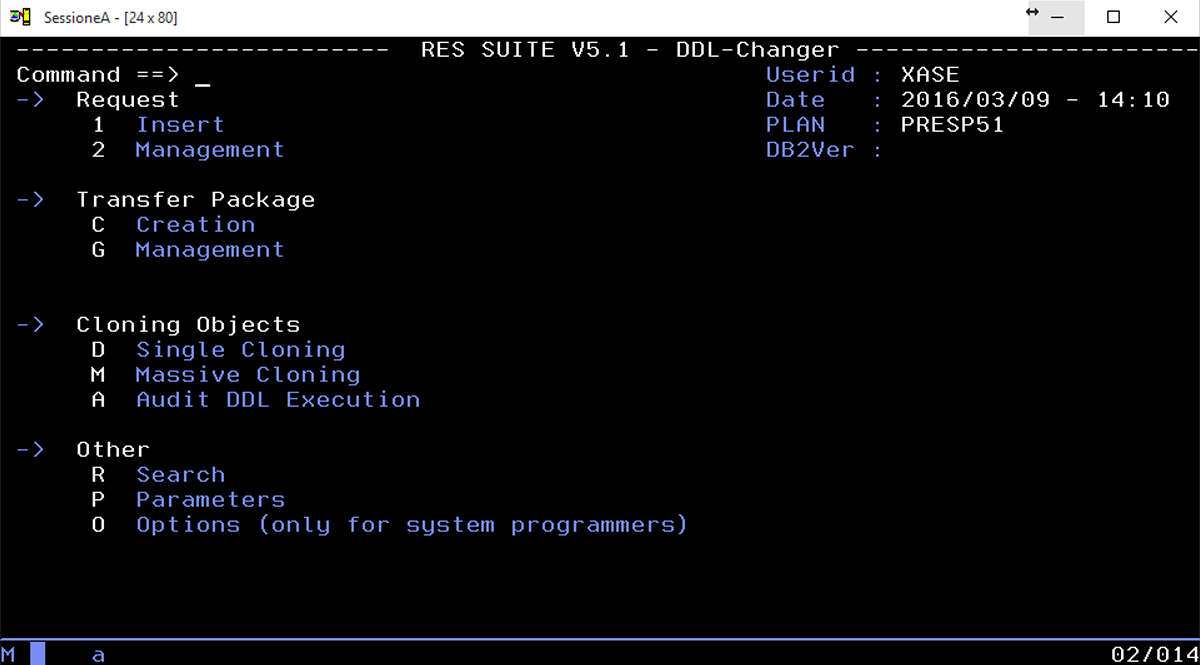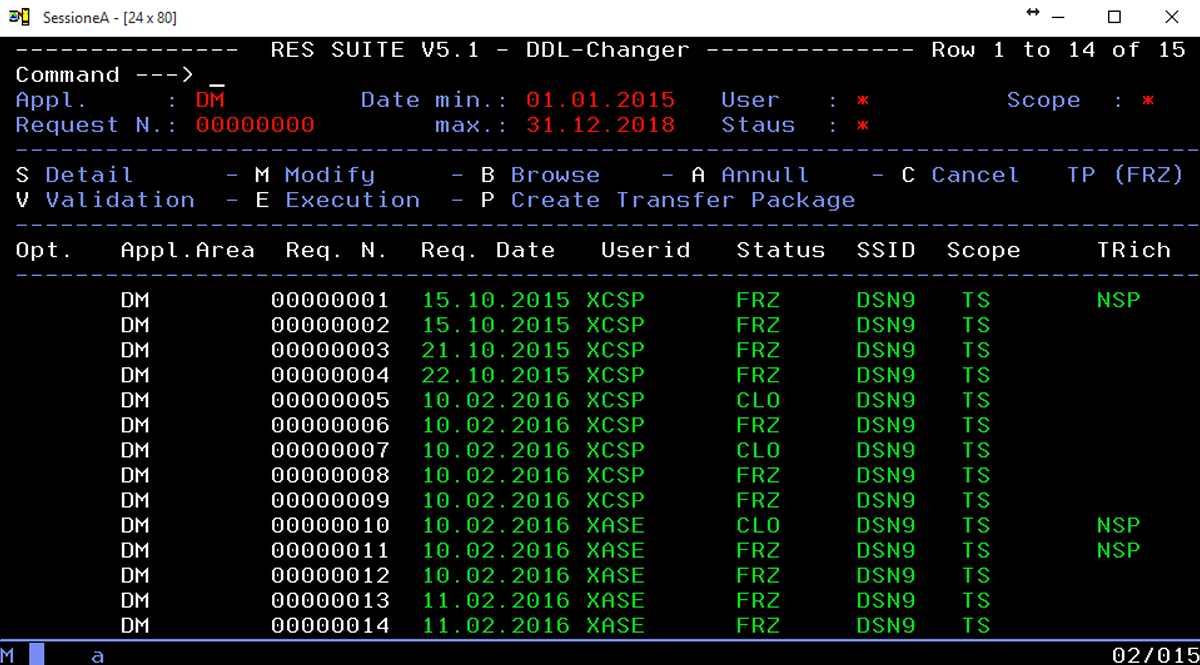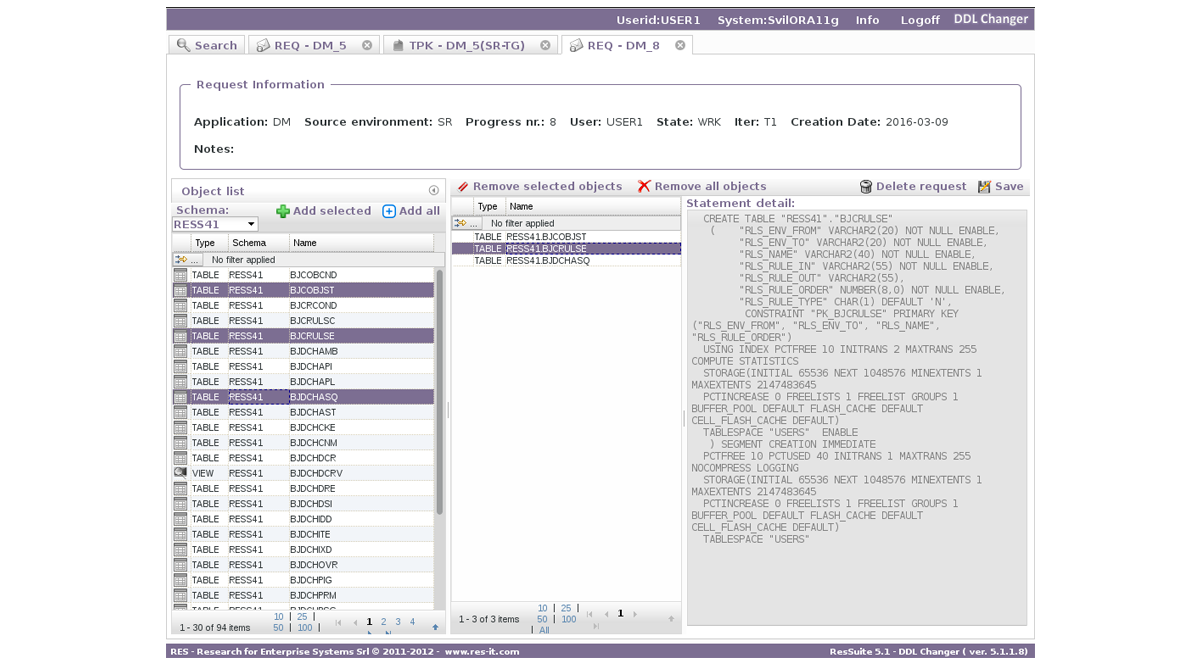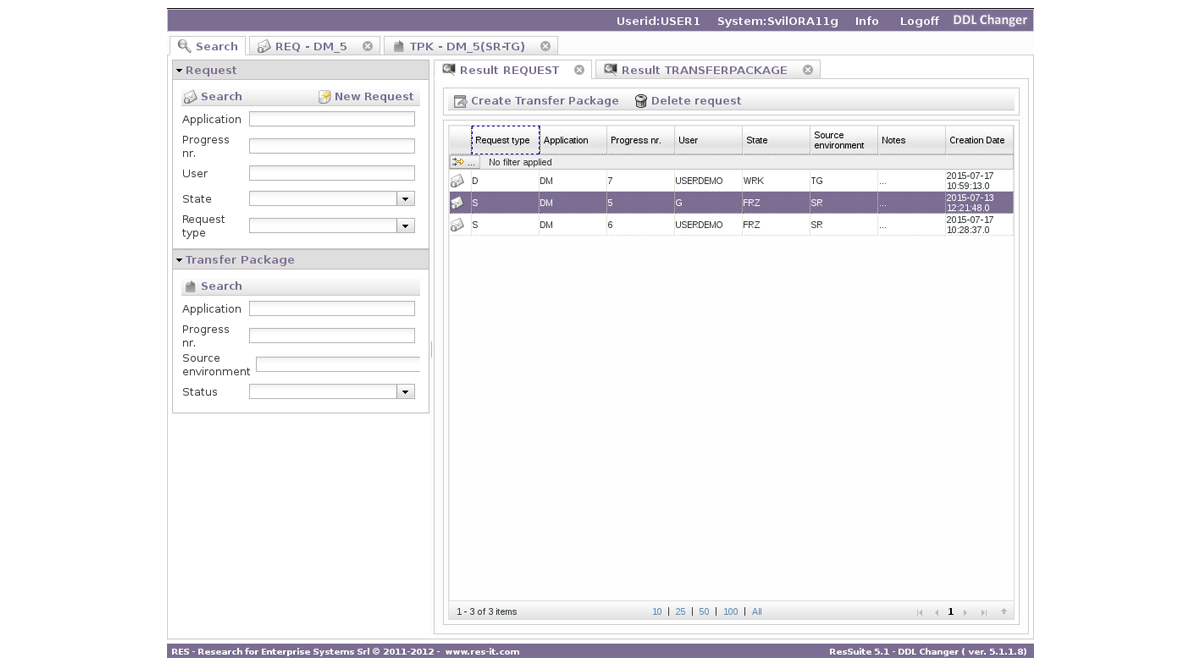DDL CHANGER
Because of the complexity of automated operations, relational database data structures are often considered a secondary element of the application life cycle, and normally excluded from change management processes, resulting in use of manual systems, characterized by lack of automation, generating a higher risk of errors and difficulties in the application of both naming conventions and behavioral standards.
Often, change management tools/processes are inadequate to address the requirements associated with managing DDL update (just the “change traffic” is taken into account). Other solutions, that are designed to essentially address this issue as an integrated feature in complex products, are expensive and difficult to use outside the systems environment context.
This leads to:
- difficulties with communication between sector development and systems management poor control regarding the correctness of the statements provided by the development staff
- risk of misalignment of the data structures in the target environments
- absence of historical details of changes to data structures and lack of operational independence from the developers
- difficulty in adapting to different production environments.
THE DDL CHANGER SOLUTION
DDL Changer manages the life cycle of the data structures and of the associated relational database objects and is able to govern the necessary changes in the different environments. DDL Changer is a technology solution for streamlining change management, characterized by a very sustainable organizational impact and costs.
DDL Changer creates a relationship in the communication between development and management, as it acts as “cross” organization instrument between them. The subject of the change, the Transfer Package, comes from an input environment, typically the test environment, which is already within the DDL Changer tool and controls and manages the progress up to the move into the working environments.
The developer is then put in a position to write, syntactically check and run his own DDL input, submitting it to the QA controls, consolidate and promote to any next stage where it is regenerated and adapted to the target environment.
The automated control, the DDL generation for differences and the changes are guaranteed throughout the change lifecycle process, which can be configured via various parameters to adapt to any specific needs of the customer parallel lines of tests and testing, multi corporate systems,…
DDL Changer is also able to coordinate the alignment and/or to generate the creation of an entire target environment, starting from a basic environment, thus allowing the definition or the update of an entire system in a very short time.
For all these functions DDL Changer is able to interface with virtually all the most common change “administration” tools on the market and can be easily integrated with popular change management systems.




OBJECTIVES AND FUNCTIONALITY OF DDL CHANGER
DDL Changer is a tool that supports the life cycle management of relational data structures and the environment throughout all of the stages, from development to test to production.
DDL Changer is not limited, like traditional change management tools, to just the promoting and versioning features, but instead, it bases its features on the ability to control, generate, and adapt all of the relational objects to the different environments in which there are updates in the change path, ensuring that the progress of the modification package is semantically consistent at every transition.
DDL Changer also standardizes and facilitates communication between the areas of development and management, ensuring increased
operational autonomy to the application developers and at the same time lifting the DBA from checks and corrections on change requests received.
BENEFITS
- Management of the end to end process administration of relational structures from test to production:
- Assurance to avoid duplicate changes on the same object
- Edit the change request
- Controlled forwarding of the change package
- Archiving of the changes and the status of any executions
- Centralized control of operations of systems and applications
- Integration of functionality for:
- Syntax check of the package
- Comparison of object structures across environments
- DDL generation for all target environments
- Additional quality controls customizable by the user – congruence, reserved words…
- Conversion of automatic naming convention for target environments
- Controlled execution of the DDL in the source environment for the application developers and in the target environments for the DBA
- Management of cross-systems: ability to communicate directly with a network of subsystems also placed on different systems provided that they can be reached via TCP-IP
- Integration with popular change management tools thanks to a special batch API and SOA Web Services.




